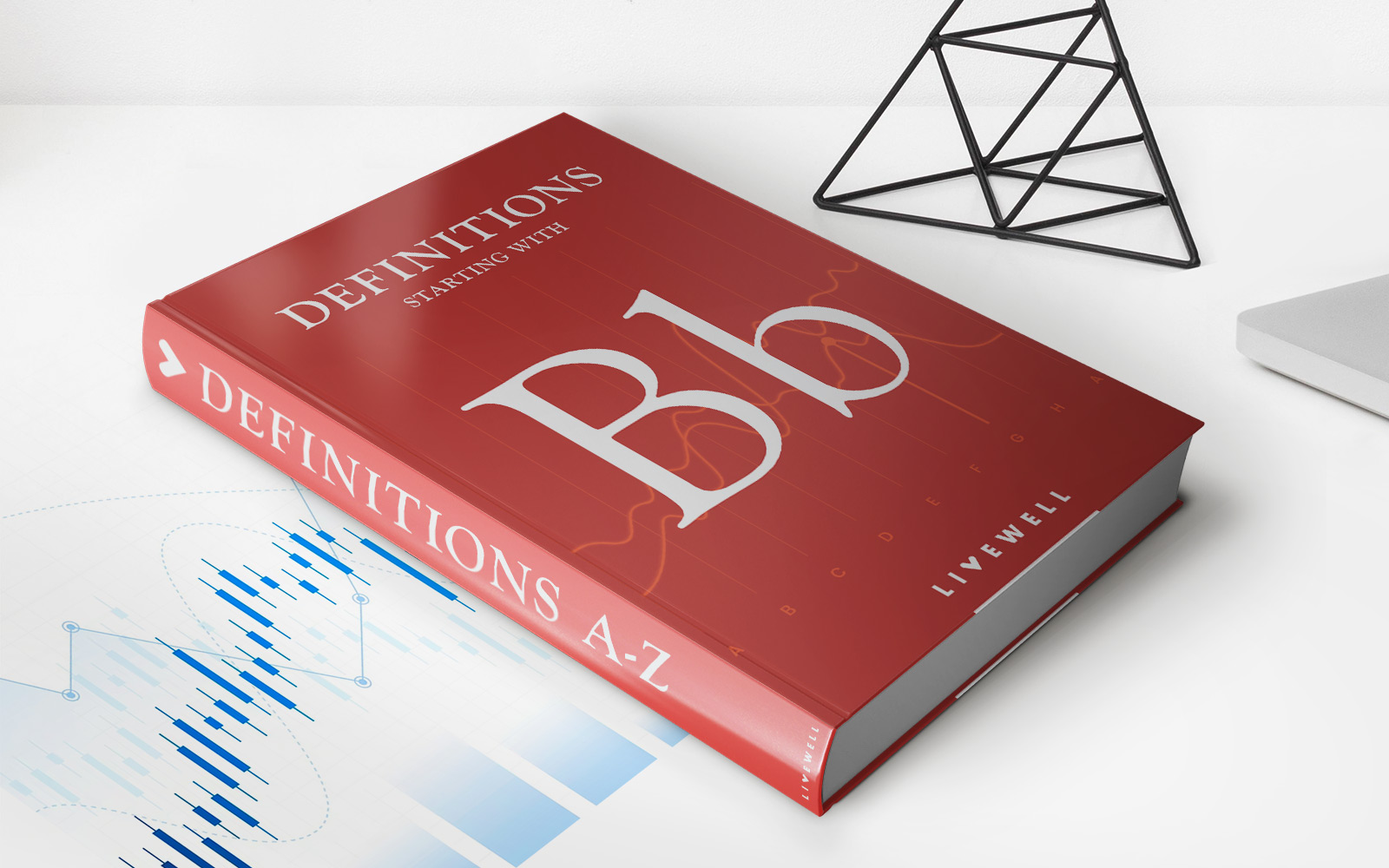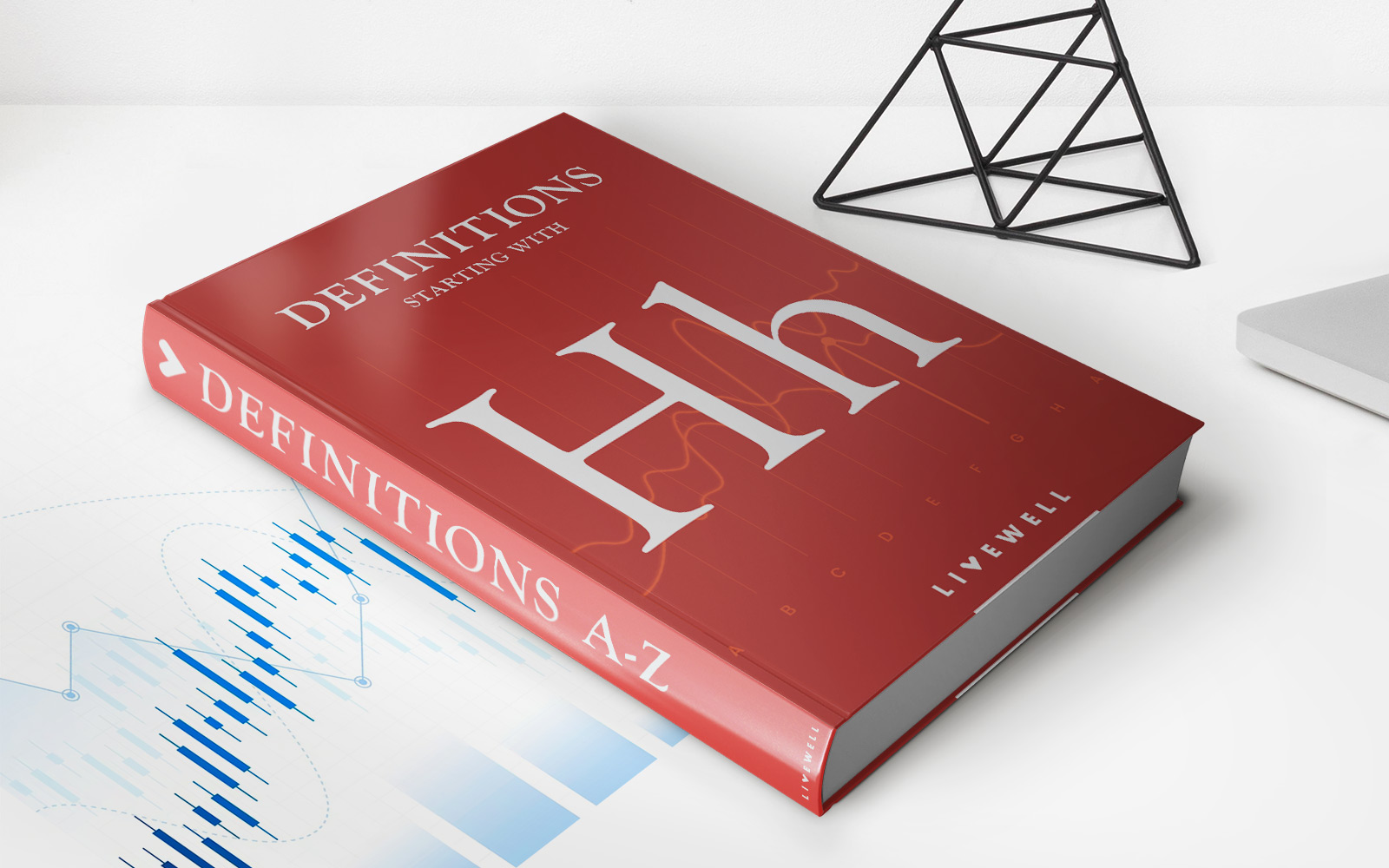

Finance
Which Is Better: EE Or I Savings Bonds
Modified: February 23, 2024
Looking to invest in Finance? Discover the pros and cons of EE and I Savings Bonds to make the best financial decision for your future.
(Many of the links in this article redirect to a specific reviewed product. Your purchase of these products through affiliate links helps to generate commission for LiveWell, at no extra cost. Learn more)
Table of Contents
- Introduction
- What are EE Savings Bonds?
- What are I Savings Bonds?
- Key Features of EE Savings Bonds
- Key Features of I Savings Bonds
- How Interest Rates are Calculated
- Tax Considerations
- Liquidity and Accessibility
- Pros and Cons of EE Savings Bonds
- Pros and Cons of I Savings Bonds
- Factors to Consider when Choosing between EE and I Savings Bonds
- Conclusion
Introduction
Welcome to the world of savings bonds! Saving for the future is an essential part of financial planning, and savings bonds are a popular choice among individuals looking for a safe and reliable investment option. In the realm of savings bonds, two options stand out – EE Savings Bonds and I Savings Bonds.
Both EE and I Savings Bonds are issued by the U.S. Department of the Treasury and offer a way for individuals to invest in low-risk government-backed securities while earning interest. These bonds can be a smart addition to your investment portfolio, providing stability and a predictable return.
In this article, we will explore the key differences between EE and I Savings Bonds, their features, how interest rates are calculated, tax considerations, liquidity, and accessibility. We will also discuss the pros and cons of each bond type and provide you with some valuable tips to consider when choosing between EE and I Savings Bonds.
By the end of this article, you will have a better understanding of these savings bonds and be equipped with the knowledge to make an informed decision on which bond type suits your financial goals and risk tolerance.
What are EE Savings Bonds?
EE Savings Bonds, also known as Series EE Savings Bonds, are a type of U.S. Treasury bond that can be purchased directly from the U.S. Department of the Treasury. These bonds are considered low-risk investments and are backed by the full faith and credit of the United States government.
One notable feature of EE Savings Bonds is that they are sold at a discount to their face value. For example, you can purchase a $100 bond for $50. Over time, the bond will gradually increase in value until it reaches its face value, which is typically double the initial purchase price. This means that if you hold the bond until its maturity date, you will receive back the face value of the bond.
EE Savings Bonds have a fixed interest rate, which is determined at the time of purchase. The interest on these bonds is compounded semiannually, meaning that the interest you earn in one period is added to the principal and begins to earn interest itself.
One of the key benefits of EE Savings Bonds is that they have a long maturity period. Initially, these bonds have a maturity period of 20 years, but they continue to earn interest for an additional 10 years. This extended term allows you to maximize your earnings and grow your investment over a significant period.
Another advantage of EE Savings Bonds is that they are exempt from state and local income taxes. While you still have to pay federal income tax on the interest earned, you can defer paying those taxes until you redeem the bond or it reaches its final maturity.
Overall, EE Savings Bonds are a reliable and conservative investment option. They offer a guaranteed return and can be an effective way to save for long-term financial goals such as education expenses or retirement. However, it’s important to note that these bonds come with some limitations, such as minimum holding periods and penalties for early withdrawal, which we will discuss in more detail later.
What are I Savings Bonds?
I Savings Bonds, also known as Series I Savings Bonds, are another type of savings bond issued by the U.S. Department of the Treasury. While they share some similarities with EE Savings Bonds, I Savings Bonds have a few distinct features that set them apart.
One key characteristic of I Savings Bonds is that their interest rates are comprised of two components: a fixed rate and an inflation rate. The fixed rate remains constant throughout the lifespan of the bond, while the inflation rate is updated every six months to reflect changes in the consumer price index (CPI) and can vary based on economic conditions.
The combination of a fixed rate and an inflation rate allows I Savings Bonds to offer a potential hedge against inflation. This means that even if inflation rises, the interest rate on your bond will adjust accordingly, helping to protect the purchasing power of your investment.
Unlike EE Savings Bonds, I Savings Bonds are sold at their face value. The minimum purchase is $25, and the maximum purchase amount in one calendar year is $10,000 per Social Security Number. This lower minimum investment requirement makes I Savings Bonds more accessible to a wider range of investors.
One notable advantage of I Savings Bonds is their tax advantage. Similar to EE Savings Bonds, the interest earned on I Savings Bonds is subject to federal income tax, but they are exempt from state and local income taxes. Additionally, if you use the bond proceeds to pay for qualified higher education expenses, you may be eligible for a tax exclusion on the interest earned.
Another distinguishing feature of I Savings Bonds is their adjustment period. These bonds cannot be redeemed within the first 12 months of purchase, and if you redeem them within the first five years, you will lose the most recent three months of interest. However, after the first year, you can redeem them at any time without penalty.
I Savings Bonds are a flexible investment option, allowing you to purchase electronic bonds online through the TreasuryDirect website or using your tax refund. They provide an opportunity to earn a competitive interest rate while offering protection against inflation. If you are looking for an investment that balances safety and potential growth, I Savings Bonds might be a suitable choice.
Key Features of EE Savings Bonds
EE Savings Bonds come with several key features that make them an attractive investment option for many individuals. Understanding these features can help you determine if EE Savings Bonds align with your financial goals and risk tolerance. Here are some important aspects to consider:
- Low-Risk Investment: EE Savings Bonds are considered one of the safest investments available. They are backed by the full faith and credit of the United States government, meaning that there is virtually no risk of default.
- Fixed Interest Rate: When you purchase an EE Savings Bond, the interest rate is set at the time of purchase and remains fixed for the life of the bond. This provides certainty in knowing how much interest you will earn over the bond’s term.
- Long Maturity Period: EE Savings Bonds have an initial maturity period of 20 years, meaning that they continue to earn interest for up to 20 years from the issue date. After reaching the 20-year mark, the bond enters the extended maturity period, where it can continue to accrue interest for an additional 10 years.
- Double in Value: Over the course of the EE Savings Bond’s original maturity period, the bond’s value will gradually increase until it reaches double its initial purchase price. This ensures that you will receive the bond’s face value if you hold it until maturity.
- Tax Advantages: EE Savings Bonds offer some tax advantages. While the interest earned is subject to federal income tax, it is exempt from state and local income taxes. Additionally, you can defer paying federal income tax until redemption or the final maturity of the bond.
- Access to Education Benefits: EE Savings Bonds can be used to fund qualified higher education expenses. If you meet certain income requirements and use the bond proceeds for educational purposes, you may be eligible for a tax exclusion on the interest earned.
- Flexibility in Purchasing: You have the option to purchase EE Savings Bonds online through the TreasuryDirect website or by using your tax refund. This convenience allows you to easily add these bonds to your investment portfolio.
These features make EE Savings Bonds an appealing choice for individuals who prioritize stability, long-term savings, and tax advantages. However, it’s important to consider the potential drawbacks, such as the limited liquidity and potential penalties for early redemption, which we will discuss in more detail later.
Key Features of I Savings Bonds
I Savings Bonds offer unique features that set them apart from other investment options. Understanding these key features can help you decide if I Savings Bonds align with your investment objectives. Here are the important aspects to consider:
- Inflation Protection: One of the standout features of I Savings Bonds is their built-in protection against inflation. The interest rate on I Savings Bonds is composed of both a fixed rate and an inflation rate. The inflation rate is adjusted semiannually based on changes in the Consumer Price Index for All Urban Consumers (CPI-U). This ensures that your bond’s interest keeps pace with inflation, providing a measure of protection for your investment’s purchasing power.
- Tax Advantages: Similar to EE Savings Bonds, the interest earned on I Savings Bonds is subject to federal income tax, but it is exempt from state and local income taxes. Furthermore, if you use the bond proceeds to pay for qualified higher education expenses, you may be eligible for a tax exclusion on the interest earned.
- Low Minimum Investment: I Savings Bonds have a low minimum investment requirement, starting at just $25. This makes them accessible to a wide range of investors who may not have large sums of money to invest.
- Deferral of Taxes: With I Savings Bonds, you have the flexibility to defer paying federal income tax on the interest earned until you redeem the bond or it reaches its final maturity. This can be beneficial for individuals who want to delay their tax obligations.
- Long-Term Growth: Like EE Savings Bonds, I Savings Bonds have an extended maturity period. The bonds have an initial term of 30 years, during which they continue to accrue interest. This extended period allows your investment to grow steadily over time.
- Flexible Purchase Options: You can conveniently purchase I Savings Bonds online through the TreasuryDirect website or by allocating a portion of your tax refund towards the bond. This ease of purchase makes it simple to incorporate I Savings Bonds into your investment strategy.
These key features make I Savings Bonds an attractive option for investors seeking inflation protection, tax advantages, and lower minimum investment requirements. However, it’s important to consider the potential limitations, such as the adjustment period and potential penalties for early redemption, which we will explore in more detail later in this article.
How Interest Rates are Calculated
The calculation of interest rates for both EE Savings Bonds and I Savings Bonds follows a specific process. Understanding how these rates are determined can provide insights into the potential returns on your investment. Let’s take a closer look at how interest rates are calculated for both bond types:
EE Savings Bonds: The interest rate for EE Savings Bonds is determined at the time of purchase and remains fixed for the life of the bond. These bonds have a base interest rate set by the U.S. Department of the Treasury, which is adjusted twice a year, on May 1st and November 1st. The Treasury uses a formula that takes into account current market rates to determine the fixed rate for new EE Savings Bonds. Additionally, EE Savings Bonds earn interest based on a compounded semiannual rate. The exact amount of interest earned depends on the bond’s purchase date and the timing of interest accrual periods.
I Savings Bonds: The interest rate for I Savings Bonds is comprised of two components: a fixed rate and an inflation rate. The fixed rate remains constant throughout the life of the bond, while the inflation rate is adjusted every six months based on changes in the Consumer Price Index for All Urban Consumers (CPI-U), which measures inflation. The inflation rate is calculated by taking the CPI-U from six months before the bond’s issue date and comparing it to the CPI-U in the current six-month period. The resulting inflation rate, if positive, is added to the bond’s fixed rate to determine the total interest rate for that six-month period. If negative, the total interest rate will not be below zero, protecting investors from experiencing negative yields.
Both EE Savings Bonds and I Savings Bonds offer the potential to earn interest over time. However, it’s important to note that the interest rates for these bonds are subject to change, reflecting market conditions and the economic environment. The rates are updated regularly, and it’s recommended to check the current rates before making any investment decisions.
Understanding the calculation of interest rates can help you evaluate the potential returns on your savings bond investments. Keep in mind that these rates are fixed or adjusted based on prevailing factors, and they play a significant role in determining the growth of your investment over time.
Tax Considerations
When investing in savings bonds, it’s important to consider the tax implications of your investment. Both EE Savings Bonds and I Savings Bonds have certain tax considerations that can impact your overall return. Let’s explore the tax aspects of these bonds:
EE Savings Bonds: The interest earned on EE Savings Bonds is subject to federal income tax, but it is exempt from state and local income taxes. However, you have the option to defer paying federal income tax on the bond’s interest until you redeem the bond or it reaches its final maturity. This can be advantageous if you are looking to postpone your tax obligations and potentially benefit from a lower tax rate in the future.
I Savings Bonds: Similar to EE Savings Bonds, the interest earned on I Savings Bonds is subject to federal income tax. However, I Savings Bonds provide an additional tax advantage for certain individuals. If you use the proceeds from an I Savings Bond to pay for qualified higher education expenses, you may be eligible for a tax exclusion on the interest earned. This exclusion can help reduce your tax burden and increase the overall return on your investment.
It’s important to note that while savings bond interest may be exempt from certain state and local taxes, it is still considered when determining your federal income tax liability. Therefore, it’s essential to factor in the taxable portion of the interest earned when planning your taxes.
Additionally, both EE Savings Bonds and I Savings Bonds offer the option to report interest annually or defer reporting until the bond matures, is redeemed, or reaches its final maturity. However, it’s recommended to consult with a tax advisor or refer to the official IRS guidelines to ensure compliance with tax regulations and to make informed decisions about when and how to report bond interest.
Understanding the tax considerations associated with savings bonds can help you plan your finances more effectively. By considering the tax implications, you can make informed decisions about your investments and potentially maximize your after-tax returns.
Liquidity and Accessibility
When investing in savings bonds, it’s essential to consider the liquidity and accessibility of your investment. Both EE Savings Bonds and I Savings Bonds offer different levels of liquidity and accessibility. Let’s delve into these factors:
EE Savings Bonds: EE Savings Bonds have a minimum holding period of one year, which means that you cannot redeem the bonds within the first year of purchase. After the holding period, you have the option to redeem the bonds before they mature, but there may be penalties for early withdrawal if you redeem them within the first five years. The penalties vary depending on the bond’s age at the time of redemption. If you hold the bonds for at least five years, you can redeem them without penalty.
Moreover, EE Savings Bonds can be purchased directly from the U.S. Department of the Treasury, through TreasuryDirect, or using your tax refund, offering accessibility to a wide range of investors.
I Savings Bonds: I Savings Bonds also have a minimum holding period of one year, during which they cannot be redeemed. However, after the first year, you can redeem I Savings Bonds at any time without penalty. This provides more flexibility compared to EE Savings Bonds, allowing you to access your investment when needed.
Similar to EE Savings Bonds, I Savings Bonds can be purchased online through TreasuryDirect or by allocating a portion of your tax refund towards the bond, making them easily accessible for investors.
Both EE Savings Bonds and I Savings Bonds offer the option to convert paper bonds to electronic format through TreasuryDirect, increasing their liquidity and reducing the risk of loss or damage. This electronic format also provides ease of management and tracking of your bond investments.
It’s important to consider your financial goals and needs when evaluating the liquidity and accessibility of savings bonds. If you anticipate needing access to your funds in the near term, I Savings Bonds may provide more flexibility. However, if you have a longer investment horizon and prefer the potential interest growth of EE Savings Bonds, their holding period and potential penalties may be more manageable.
Overall, understanding the liquidity and accessibility of savings bonds can help you align your investment strategy with your financial goals and cash flow requirements.
Pros and Cons of EE Savings Bonds
EE Savings Bonds offer several advantages and disadvantages that you should consider when evaluating whether they are the right investment for you. Let’s explore the pros and cons of EE Savings Bonds:
Pros:
- Safety: EE Savings Bonds are backed by the U.S. government, making them a low-risk investment option. They provide a guaranteed return of the bond’s face value if held to maturity.
- Fixed Interest Rate: The interest rate on EE Savings Bonds is determined at the time of purchase and remains fixed throughout the life of the bond. This provides certainty in calculating the bond’s earnings.
- Long Maturity Period: EE Savings Bonds have a long initial maturity period of 20 years, and they continue to earn interest for an additional 10 years. This can be advantageous for long-term savings goals.
- Tax Advantages: While the interest earned on EE Savings Bonds is subject to federal income tax, it is exempt from state and local income taxes. Additionally, you have the option to defer federal income tax until redemption or final maturity.
- Education Benefits: EE Savings Bonds can be used to fund qualified higher education expenses. This makes them a valuable tool for saving for your or your child’s education.
- Accessibility: EE Savings Bonds can be purchased directly from the U.S. Department of the Treasury, through TreasuryDirect, or by using your tax refund. This accessibility makes it easy to add them to your investment portfolio.
Cons:
- Limited Liquidity: EE Savings Bonds have a minimum holding period of one year, and penalties may apply if redeemed within the first five years. This lack of immediate liquidity may not be suitable for investors needing quick access to their funds.
- Interest Rate Variation: The fixed interest rate on EE Savings Bonds may not keep pace with inflation or changes in market interest rates. This can result in a lower real return on your investment over time.
- Low Return on Investment: While EE Savings Bonds are a safe investment, their returns can be relatively low compared to other investment options. If you have a higher risk tolerance and seek higher potential returns, you may find other investments more suitable.
- Tax Considerations: Although there are tax advantages to EE Savings Bonds, you still have to pay federal income tax on the interest earned. This may impact your overall after-tax returns.
- Inflation Risk: While EE Savings Bonds provide a guaranteed return, they may not offer substantial protection against inflation. The fixed interest rate may not keep up with the rising cost of living.
Consider these pros and cons carefully when deciding whether to invest in EE Savings Bonds. While they offer stability and tax advantages, their limited liquidity and potential lower returns should also be taken into account. Assessing your financial goals, risk tolerance, and time horizon will help you determine if EE Savings Bonds align with your investment strategy.
Pros and Cons of I Savings Bonds
I Savings Bonds come with their own set of advantages and disadvantages that you should consider before deciding to invest in them. Let’s explore the pros and cons of I Savings Bonds:
Pros:
- Inflation Protection: I Savings Bonds are designed to provide a measure of protection against inflation. The interest rates on these bonds are composed of a fixed rate and an inflation rate, which helps to preserve the purchasing power of your investment over time.
- Tax Benefits: The interest earned on I Savings Bonds is exempt from state and local income taxes. Additionally, if you use the bond proceeds to pay for qualified higher education expenses, you may qualify for a tax exclusion on the interest earned. These tax advantages can increase the after-tax return on your investment.
- Low Minimum Investment: I Savings Bonds have a low minimum investment requirement, starting at just $25. This accessibility makes them more accessible to a wider range of investors who may not have large sums of money to invest.
- Flexible Purchase Options: You can conveniently purchase I Savings Bonds online through TreasuryDirect or allocate a portion of your tax refund toward the bond. This ease of purchase allows for easy inclusion of I Savings Bonds in your investment portfolio.
- No Penalty for Early Redemption: After the first year, you can redeem I Savings Bonds at any time without penalty. This provides more flexibility compared to other types of savings bonds if you need to access your funds before maturity.
Cons:
- Lower Fixed Rate: The fixed interest rate on I Savings Bonds may be relatively lower compared to other investment options. While the bond offers inflation protection, the fixed rate may not provide a significant return on its own.
- Interest Rate Variation: The inflation rate component of I Savings Bonds is adjusted every six months based on changes in the consumer price index (CPI). This means that the actual interest rate on the bond can vary over time, depending on inflation levels. As a result, the rate of return on I Savings Bonds may not keep up with inflation or changes in market interest rates.
- Long-Term Investment: I Savings Bonds have a long initial maturity period of 30 years. While they can be redeemed without penalty after the first year, this may not be ideal for investors seeking a more short-term investment with immediate liquidity.
- Potential Inflation Risk: Although I Savings Bonds provide some protection against inflation, they may not fully mitigate the impact of rising prices. The fixed rate component may not keep up with the rate of inflation, which can result in a lower real return on your investment over time.
Consider these pros and cons carefully when evaluating whether to invest in I Savings Bonds. While they offer inflation protection, tax advantages, and accessibility, their lower fixed rate and long investment horizon may not align with everyone’s goals and risk tolerance. Assess your financial objectives and time horizon to determine if I Savings Bonds are a suitable addition to your investment portfolio.
Factors to Consider when Choosing between EE and I Savings Bonds
When deciding between EE Savings Bonds and I Savings Bonds, it’s important to consider several factors to determine which bond type aligns best with your financial goals and preferences. Here are some key factors to consider:
- Interest Rate Preference: If you prefer a fixed interest rate that remains constant over the bond’s life, EE Savings Bonds may be a better choice. On the other hand, if you want your bond’s interest rate to adjust with inflation, I Savings Bonds offer a combination of fixed and inflation-based rates.
- Inflation Protection: If you are concerned about the impact of inflation on your investment’s purchasing power, I Savings Bonds provide built-in protection by adjusting their interest rate periodically based on changes in the consumer price index (CPI). This makes them more suitable if inflation is a significant concern.
- Liquidity: Consider your need for liquidity. If you anticipate needing access to your funds before the bond’s maturity, I Savings Bonds may be a better option, as they allow for penalty-free redemption after holding them for at least one year. EE Savings Bonds, on the other hand, have penalties for early redemptions within the first five years.
- Tax Implications: Evaluate the tax advantages of each bond type. Both EE and I Savings Bonds offer tax benefits, but the specifics may differ. Consider factors such as state and local tax exemptions and the potential for tax-exempt interest when using the bond proceeds for qualified higher education expenses.
- Investment Horizon: Determine your investment timeframe. EE Savings Bonds have an initial maturity period of 20 years, while I Savings Bonds have a maturity period of 30 years. If you have a longer investment horizon and are willing to commit to a longer term, either bond may be suitable. However, if you prefer a shorter investment horizon, the flexibility of I Savings Bonds may better align with your goals.
- Minimum Investment: Consider the minimum investment required for each bond type. I Savings Bonds have a minimum purchase requirement of $25, making them more accessible to investors with smaller amounts of capital. EE Savings Bonds, on the other hand, have a minimum purchase requirement of $25 as well, but they are also available in paper form with a face value of $50 or more.
- Risk Tolerance: Assess your risk tolerance. While both bonds are considered low-risk investments, the fixed interest rate of EE Savings Bonds provides more predictability compared to the inflation-adjusted rates of I Savings Bonds. If you are more risk-averse and prioritize stability, EE Savings Bonds may be a better fit.
- Education Funding: If your primary objective is to save for higher education expenses, both bond types provide this option. Consider the specific tax benefits and eligibility requirements for using the bond proceeds for educational purposes to determine which bond aligns best with your education savings goals.
By considering these factors, you can evaluate which savings bond type aligns best with your individual circumstances, investment preferences, and financial goals. It’s important to carefully assess your needs and conduct thorough research before making a decision.
Conclusion
Choosing between EE Savings Bonds and I Savings Bonds requires careful consideration of various factors such as interest rate preferences, inflation protection, liquidity needs, tax implications, investment horizon, minimum investment, risk tolerance, and education funding objectives. Both bond types offer distinct advantages and disadvantages, catering to different investor preferences and financial goals.
EE Savings Bonds provide a fixed interest rate, long-term growth potential, tax advantages, and accessibility. They are a suitable option for individuals seeking stability, long-term savings, and tax benefits. However, they come with limited liquidity and potential penalties for early redemption.
I Savings Bonds, on the other hand, offer inflation protection, tax advantages, lower minimum investment requirements, and greater liquidity. They adjust their interest rates based on changes in the consumer price index, making them an attractive option for investors concerned about inflation. However, the fixed interest rates on I Savings Bonds may be relatively lower, and they have a longer initial maturity period.
When making a decision, it’s crucial to evaluate your investment goals, risk tolerance, time horizon, and specific financial needs. Consider factors such as potential returns, tax implications, accessibility, and the level of inflation protection that aligns with your financial objectives.
Ultimately, a balanced approach may be to diversify your investment portfolio by including both EE Savings Bonds and I Savings Bonds. This combination can provide stability, inflation protection, tax advantages, and flexibility in managing your investments.
Remember, savings bonds are long-term investments and may not offer the same level of returns or growth potential as other investment options. It’s important to assess your overall investment strategy and consult with a financial advisor to ensure that your savings bond investments align with your broader financial plan.
By carefully considering the features, pros and cons, and key factors discussed in this article, you can make an informed decision about whether EE Savings Bonds, I Savings Bonds, or a combination of both best meet your financial goals and risk tolerance.














